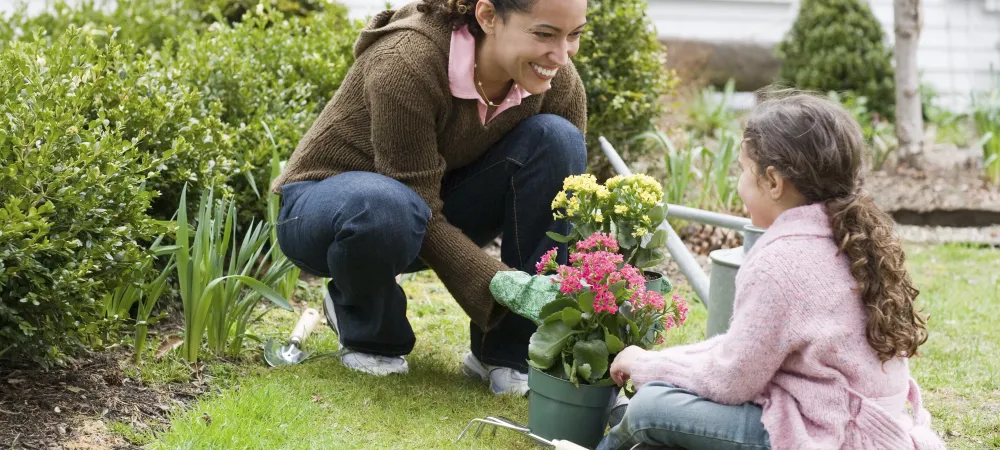Dangerous Plants to Watch Out For

It is summer in Virginia, a time to be outside, entertaining in your backyard, and enjoying the great outdoors. We have some of the country’s most beautiful forests and trails. But with everything good also comes the bad. When out walking, biking, hiking, or even weeding in your backyard, it’s important to remember there are a few plants that can harm us. Poison ivy, sumac, and oak are in abundance this time of year, as well as a few other plants that can be dangerous. Learn what they are and how to identify them so that you can maintain your distance and keep yourself, your family, and your pets away from these plants. Here is a list of the four most commonly found in our area.
The Three Evil Cousins
When it comes to plants to watch out for, there are 3 very similar Virginia plants to keep an eye out for:
Poison Ivy
We’ve all heard the phrase, “if it comes in three, let it be.” The leaves on poison ivy always appear with one big leaf in the center and two smaller leaves shooting off the sides. The leaves can be either notched or smooth and have pointed tips. It is the most common and well-known poison plant. Here in Virginia, it is often confused with Virginia creeper, which can also be poisonous if ingested. The two often grow together and are frequently confused with each other. Like Virginia creeper, Poison ivy can grow as a shrub or a vine that climbs up the sides of trees.
The leaves produce a chemical called urushiol, which causes severe allergic reactions poison ivy is famous for. Even if you brush up against a small amount, it can trigger an itchy and painful allergic reaction that can last for weeks.
Poison Sumac
Poison ivy’s ugly cousin, sumac, also contains the poisonous toxin urushiol. Sumac grows as a woody-stemmed tree that can grow up to twenty feet tall. It is usually found in swamps and wetlands. Poison sumac has leaves, each made up of 5 to 13 leaflets on each stem. While the exact number varies, it is always an odd number. That’s because, while most of the leaflets form matching pairs, there’s always one leaflet at the tip of the leaf that gives it the shape of a feather. Its leaves are pointed and have smooth edges. Another identifying component of poison sumac is its red stems. In the fall, poison sumac leaves turn red, yellow, and pink and produce bright yellow berries.
Poison Oak
The third component to this vile trio is poison oak. It, too, packs the same poisonous punch but has long, lobed leaves that look like oak tree leaves. Its leaflets are duller green, and unlike poison ivy, they have hairs on both sides. Poison oak is a low-growing, upright shrub. It can grow anywhere from five to 20 feet tall, sometimes giving it the appearance of a vine.
All three can cause allergic reactions such as itchy red rashes that resemble burns, swelling and blistering. The toxin found in all three, urushiol, is so potent that it can bind to the skin and, in less than 30 minutes, be too late to wash off. Urushiol can remain hidden in clothes, tools, and even trees that once hosted the plant. Never burn poison ivy or oak. The urushiol can be carried on the smoke and can get into your mouth, lips, and even down your throat.
White Snakeroot
Disguising itself as a wildflower, the white snakeroot plant is a dangerous plant that can cause illness in both humans and livestock if eaten. It can grow over four feet tall and is topped with clusters of tiny white flowers. These flowers contain a toxin called trematol and can be fatal to humans and livestock if eaten.
While this may sound like an easy fix since all one has to do is avoid eating white snakeroot, humans can get sick simply by ingesting the milk of cattle that have grazed on this dangerous weed. Often called “milk sickness,” Symptoms in humans include loss of appetite, nausea, weakness, abdominal discomfort, reddened tongue abnormal acidity of the blood.
Pokeweed
Pokeweed is a large, bushy perennial that resembles a small tree as it can quickly grow up to eight feet tall. It is characterized by a smooth red-purple stem, large narrow leaves, and clusters of dark purple berries. It typically grows in pastures, open areas, and roadsides.
All parts of the plants contain toxic chemicals and are poisonous to humans, pets, and livestock. Not only is it dangerous to ingest, but the skin can also absorb it. The poison can cause nausea, vomiting, diarrhea and interfere with respiration and pulse.
Jimson Weed
Also known as Devil’s Weed, Native Americans once used this highly toxic plant for its hallucinogenic properties. While its leaves and seeds are used to make medicine, they can pose a huge problem for livestock and humans if accidentally ingested. Symptoms in livestock can happen anywhere from a few minutes after eating the plant to up to several hours. They can include: dehydration, dilated pupils, agitation, increased heart rate, trembling, convulsions, and possibly death. Jimson weed can be identified by its large irregular leaves and white to purple funnel-shaped flowers. It can grow to be three to five feet tall. Jimson weed’s white to purple blooms leave off a fragranced scent at night and attract moths and nocturnal pollinators. A fascinating plant but probably not safe if you have a dog or other animals eager to eat whatever appears tasty.
For All Your Plant Care Needs, Get Plant Health Care From the Professionals at NuLeaf
Now that you know which plants to look out for, it’s time to get the rest of your landscape back into shape. Whether it’s a new landscape or one you want to spruce up, NuLeaf can help. Our unique plant health care approach can be customized to fit the needs of your specific landscape. Our five-step program will keep your trees and plants healthy and robust, and protected against the wrath of insects and harmful diseases. Learn more about this highly effective program by contacting us now. Visit our website and fill out our online form or give us a call at 703-688-8967.
Like what you read? Feel free to share it with friends and family. Then, follow our blog for more tips and ideas on all things lawn care and landscaping.

